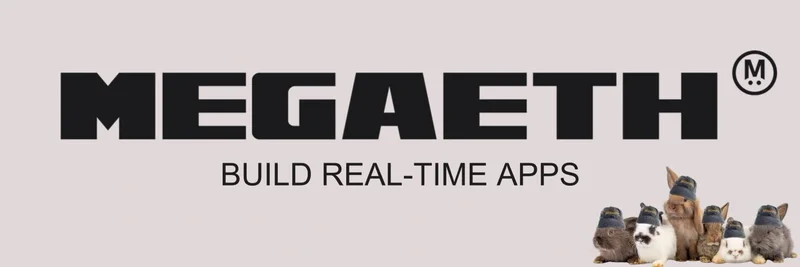TL;DR
- The BOND token at 0x6f51c83bd770e0957ff855eee2f034048bedb6dd exists on Base, but it is not confirmed to be related to BarnBridge.
- Context suggests it may be tied to ApeBond or a project using ApeBond’s “Bonds” model on Base, but verification on Basescan is essential.
- Before you interact, check the contract source, holders, liquidity pools, taxes, and any vesting/claim mechanics.
- For trading and analytics, consider Base-native DEXs and tools, including Aerodrome, the ApeBond aggregator, and GMGN.AI’s BOND page.
What is BOND on Base?
This BOND is a token on the Base network at address 0x6f51c83bd770e0957ff855eee2f034048bedb6dd. While “BOND” is a known symbol for BarnBridge’s token on Ethereum, there’s no definitive proof that this Base deployment is an official BarnBridge token. On Base, BOND could instead be:
- A project-specific token launched via ApeBond (which operates an on-chain bonding/OTC marketplace), or
- An unrelated token reusing the familiar “BOND” ticker.
Because token symbols are not unique across chains, always verify the exact contract address, project site, and docs.
Why the symbol causes confusion
- BarnBridge’s token uses “BOND” on Ethereum. However, the Base address above does not appear in BarnBridge’s official materials.
- Multiple projects can share the same ticker across different chains.
- Conclusion: Treat this BOND on Base as independent unless confirmed otherwise via official channels.
ApeBond on Base: the likely context
ApeBond is a multi-chain bonding protocol that expanded to Base, partnering with ecosystem projects like Aerodrome, Sophiaverse (SOPH), Base Mafia (MAFIA), Token DAO (TKN), and SmarDex (SDEX). The typical ApeBond model:
- Discounted token sales: Buy below market price.
- Vesting schedules: Tokens unlock over time (for example, 14–60 days).
- Protocol-Owned Liquidity (POL): Projects sell bonding positions to build durable liquidity or diversify treasuries.
- Aggregator: A multi-chain DEX aggregator to route swaps.
Important distinction: ABOND is ApeBond’s native utility token. That is different from any project token that happens to use the symbol “BOND.” Do not confuse ABOND with BOND on Base.
Base chain quick primer
Base is an Ethereum Layer 2 using the OP Stack. It aims for low fees and fast finality. There is no Base-native gas token; gas is paid in ETH. It has become a hotspot for DeFi and meme tokens due to low cost and broad accessibility.
How to verify the 0x6f51… BOND token
Use these steps before interacting:
- Confirm contract on Basescan
- Open the address on Basescan.
- Check if the contract is verified (source code published).
- Review token details (name, symbol, decimals) and any proxy/implementation relationships.
- Inspect holders and distributions
- See the top holders to assess concentration risk.
- Look for vesting or treasury addresses that match any public docs.
- Check liquidity and pools
- Identify live pools on Base DEXs (for example, Aerodrome).
- Verify total liquidity, recent volumes, and whether liquidity is locked or controlled by the project.
- Understand vesting/claims
- If ties to ApeBond exist, tokens might be bound to a vesting schedule or bond NFTs. Confirm claim mechanics and timelines in official docs or the bonding page.
- Cross-check official links
- Find the project’s official website, X/Twitter, Discord, and Medium. Ensure the contract address matches across all channels.
- Compare against BarnBridge references
- Visit BarnBridge materials. If they do not list this Base contract, treat it as unrelated.
- Run safety checks
- Use reputable scanners and trading tools that flag honeypots, high taxes, or paused transfers. Test with small amounts first.
Trading and tracking options on Base
If you decide to engage after verification:
- GMGN.AI: View price, liquidity, and on-chain flows on this BOND page.
- Aerodrome: Check pools and routes on Aerodrome.
- ApeBond Aggregator: For routing and potential bonding-related opportunities, use the ApeBond aggregator.
Tip: Always confirm you’re interacting with the correct contract address (copy-paste only from official sources).
Common pitfalls and risk checklist
- Ticker impersonation: “BOND” ≠ BarnBridge unless officially stated.
- Unverified contracts: Lack of source code is a red flag.
- Centralized admin controls: Check for owner roles, pausable transfers, or high tax functions.
- Thin liquidity: Easy to move price, hard to exit.
- Vesting traps: Tokens might be locked or release slowly—know the schedule.
- Mismatched links: Fake sites often post lookalike addresses.
Developer notes (for builders)
If you’re exploring bond-like fundraising on Base:
- ApeBond can help with discounted sales, vesting, and POL accumulation. Read their docs and confirm integration paths on ApeBond.
- Make your token’s contract verified, publish a clear vesting policy, and share the definitive contract address across all official channels to reduce confusion with similarly named tokens.
Bottom line
The BOND token at 0x6f51c83bd770e0957ff855eee2f034048bedb6dd is most reasonably treated as independent from BarnBridge. Given ApeBond’s growth on Base, it may be related to a project leveraging ApeBond’s bonding model, but you should confirm via on-chain data and official links. Verify, then trade cautiously using reputable Base tools and DEXs—when in doubt, start small and keep your security checks strict.




